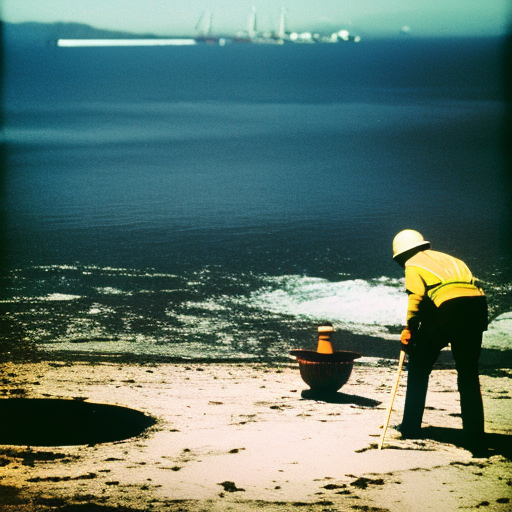Summary:
The 1971 San Francisco Bay oil spill was a major environmental disaster that occurred when two oil tankers collided in the bay, resulting in the release of over 800,000 gallons of crude oil. The spill had devastating effects on the local ecosystem, killing thousands of birds and marine animals, and causing significant damage to the coastline. The incident led to increased awareness about the need for stricter regulations on oil transportation and sparked a series of environmental reforms.
Overview:
On January 18, 1971, the oil tanker SS Arizona Standard collided with the tanker SS Oregon Standard in the San Francisco Bay. The collision ruptured the Arizona Standard’s hull, causing it to spill approximately 800,000 gallons of crude oil into the bay. The oil quickly spread across the water, creating a massive slick that covered an estimated 50 square miles.
Environmental Impact:
The 1971 San Francisco Bay oil spill had a devastating impact on the local ecosystem. The oil coated the feathers of seabirds, impairing their ability to fly and stay warm. Thousands of birds died as a result, and many more were severely injured. Marine animals, such as sea lions and seals, also suffered from the spill, with many becoming coated in oil and experiencing respiratory problems. Additionally, the oil contaminated the water, killing off fish and other marine organisms.
Cleanup Efforts:
In response to the spill, a massive cleanup operation was launched. Thousands of volunteers, along with professional cleanup crews, worked tirelessly to remove the oil from the water and shoreline. They used various methods, including booms, skimmers, and absorbent materials, to contain and remove the oil. Despite their efforts, it took several weeks to fully clean up the spill.
Regulatory Reforms:
The 1971 San Francisco Bay oil spill served as a wake-up call for the need for stricter regulations on oil transportation. The incident highlighted the dangers of oil spills and the devastating impact they can have on the environment. As a result, the U.S. Congress passed the National Oil and Hazardous Substances Pollution Contingency Plan (NOHSCP) in 1972, which established a framework for responding to oil spills and other hazardous substance releases.
Long-Term Effects:
The effects of the 1971 San Francisco Bay oil spill were felt for years after the incident. The local ecosystem took a long time to recover, with some species suffering long-term population declines. The spill also had economic consequences, as the tourism and fishing industries in the area were severely impacted. The incident served as a reminder of the importance of environmental stewardship and the need to prevent future oil spills.
Conclusion:
The 1971 San Francisco Bay oil spill was a significant environmental disaster that had far-reaching consequences. The spill resulted in the death of thousands of birds and marine animals, caused extensive damage to the coastline, and led to long-term environmental and economic impacts. The incident prompted the implementation of stricter regulations on oil transportation and highlighted the need for improved response and cleanup measures in the event of future spills.












